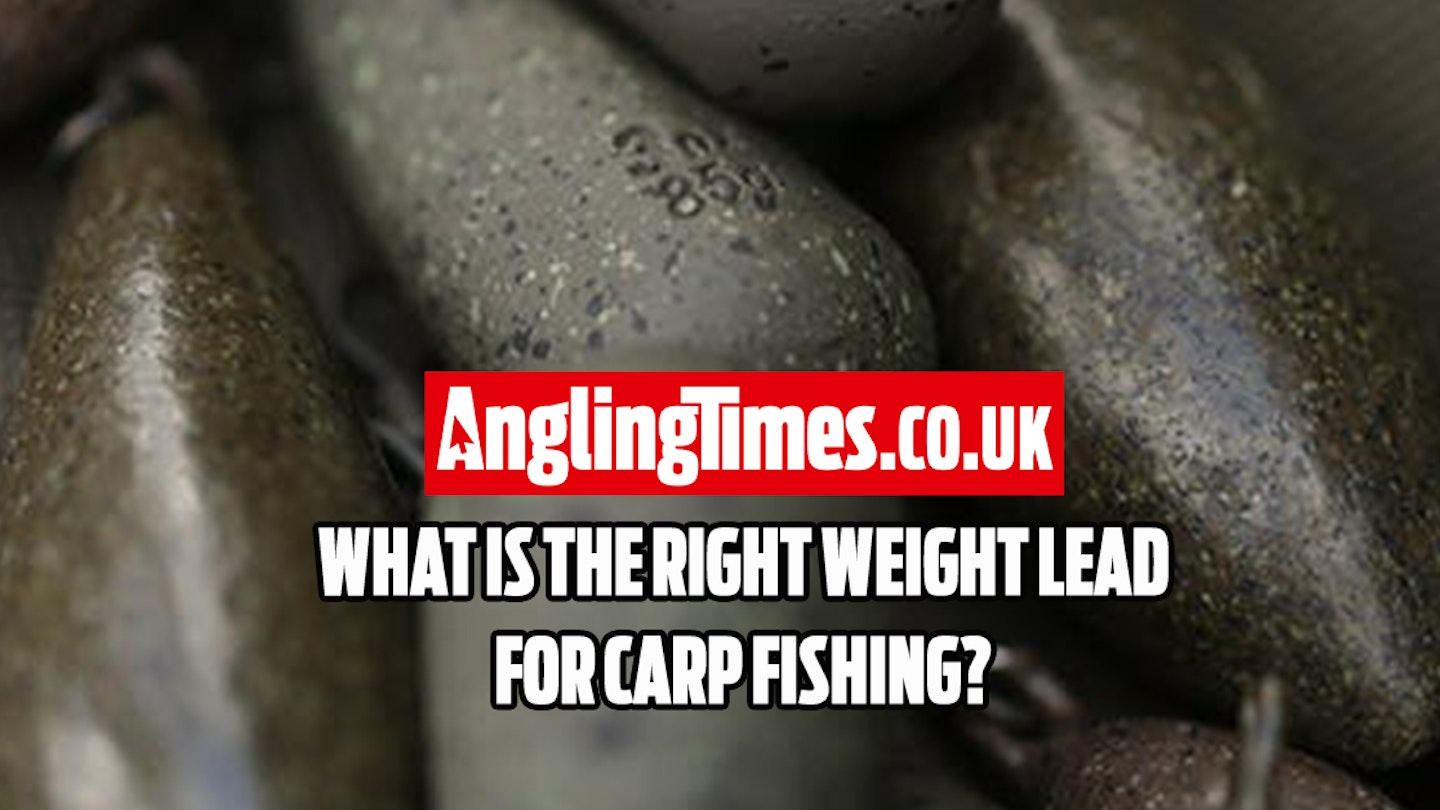Should the weight of your lead be determined purely by the distance you need to cast? Or is there more to it than that? Leads come in all shapes and sizes and it can be difficult to decide which lead is best suited to the scenario you are faced with, here is a quick guide to help with some of the decision making...
Most of us fall into the trap of using leads in the 2oz-3oz range for the vast majority of our angling. This means that carp, especially those in busy day-ticket waters, see and feel these leads more than any others, and they are able to tailor their rig-ejecting skills to cope with them accordingly. One of the easiest ways to overcome this is to use a lead which the carp don’t encounter so often, and are therefore less equipped to deal with.

HEAVY LEADS
Plus points: A weight of 4.5oz or more can really drive the hook home when a fish pulls against it. Many of the most successful anglers on well-stocked and pressured venues favour heavy leads and large hooks – not subtle, but they certainly work. Obviously, a heavy lead paired with the right rod can also cast a rig much further.
Negatives: Casting big leads requires specialist kit, whereas any carp rod will happily cast smaller leads up to 3oz. Anything heavier will require a rod with a 3.5lb test curve. Heavy leads are great at hooking fish, but they can work to your disadvantage thereafter. If you don’t discharge the lead, then the swinging ‘lump’ could easily work the hook out of position.
LIGHT LEADS
Plus points: For many, a light lead of an ounce or so is seen as harder for a carp to use as a pivot point to ‘lever’ the hook out of its mouth. Lighter leads are also great on silty lakes, where heavy weights can sink into the bottom and mask the rig. Plus, if you’re casting at a group of showing carp, a light lead will cause far less disturbance and is less likely to spook them than a 3oz lead crashing in on their heads will.
Negatives: One of the main disadvantages of a light lead is that your rig can get dragged out of position by smaller species such as roach and skimmers. A really light weight may also lack the anchoring ability to pull and set the hook into the mouth of a bigger carp. Finally, fishing bowstring-taut mainlines with light leads is tricky to present effectively without pulling your rigs out of position.

OTHER FACTORS TO CONSIDER
Weight is only half the story – you also have to take into account where it is cast. A flat, heavy lead is more likely to rest on any bottom debris than a tournament-style lead, which has most of its weight at the front; these are more likely to dive into the debris. A big, dumpy lead has most of its mass in a smaller area, so fish will feel its full anchoring force as it picks up the hookbait and straightens out the hooklink. If big casts are your aim, use pointed, nose-heavy leads.
There are pros and cons to using certain leads in certain situations and its always best to tailor the leads to the scenario you are faced with. On firm, gravel spots where the cast isn't too far a square or flat inline lead of around 4 oz would be a great choice. If you are casting to showing fish with a chod rig not only will a light lead not spook the fish as easily, it won't bury in the weed as much.
This page is a free example of the amazing content Angling Times Members get every single week. Becoming an Angling Times Member gives you access to award-winning magazine content, member rewards, our back issue archives, bonus content and more! Join our fishing community and find out more today!
